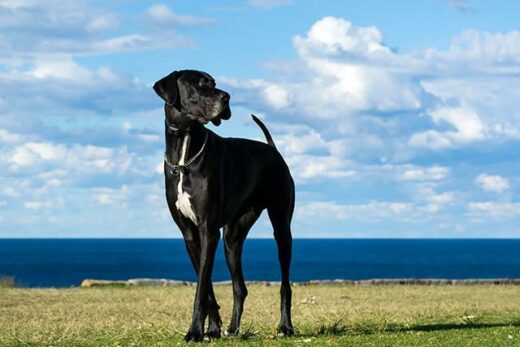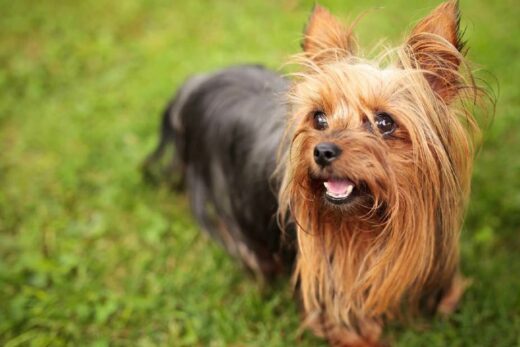Sometimes dogs find us. Someone we know has puppies or we see a dog in need of rescue and we don’t give much consideration to breed, we’re already in love. Other times we have just decided we need a dog and we’re planning our doggie addition carefully. Breed is important. It can impact the type of relationship we have with the dog, how to care for it, and health concerns we need to be watchful for. In this post, we’ll help you determine whether you want a herding dog and which of the most common herding dog breeds is right for you.
Do You Want a Herding Dog : What is a Herding Dog?
Herding dogs are dog breeds with the instinctual desire to herd, or control, other animals. These breeds were developed over time as humans taught dogs how to use their natural instincts to direct livestock. This breeding has resulted in a vast group of dog breeds that are intelligent, friendly, active, agile, and very receptive to training. They are typically fun and agreeable animals.
Herding Dogs vs Working Dogs
It is easy to confuse herding dogs with working dogs. In fact, until the American Kennel Association created a separate name for them in 1983, even experts lumped the two into the working dog category. Yes, herding is a form of work, but it is a distinct kind of work giving different characteristics than ones working dogs get from having been bred for other types of labor. Think more of pulling sleds and serving as guard dogs.
Working dogs are intelligent and great for training like herding dogs are, but they are more protectors and built for endurance rather than agility.
While similar, there are unique benefits, unique concerns, and differences in character that make herding dogs or working dogs a better fit for different pet owners.
Is a Herding Dog Right for Me?
Herding dogs make fun pets. Their intelligence, friendliness, and high activity level are perfect for the pet owner who wants to spend a lot of quality time playing with their dog.
If you can’t spend a lot of time with your herding dog, you shouldn’t have one. They can easily become overweight or obese, may develop behavior problems, and will suffer depression if they can’t be kept occupied and exercised. it isn’t possible to provide the mental and physical stimulation a herding dog needs without your presence.
Some herding dogs have such a strong herding instinct that they will attempt to herd their family members. They may nip at you, your child, or other animals like they were bred to do with livestock. It isn’t supposed to be dangerous, but it could be if they cut you or trip you. And it can be scary.
Some individual herding dogs may not be able to be around children, but most can, particularly those who were raised with children. Some may require special training to keep them from attempting to herd. This is a greater concern with some breeds than others.
Know the Most Common Herding Dog Breeds
Australian Cattle Dog
These dogs are born with white coats and develop as they grow either blue-gray or red-spotted coats with mottling and/or speckling. They are medium-sized dogs, standing between 17 and 20 inches tall and weighing between 35 and 50 pounds. Their life expectancy is 12 to 16 years. They have short, dirt-resistant coats that only shed a little, so they don’t require a lot of grooming.
They are pleasant, loyal, and curious dogs. Wary of strangers and more on the protective side, they make good watchdogs. They need a lot of quality time with their owners and a lot of exercises. If you and/or your family want a nearly constant play companion who isn’t interested in playing with everyone they meet, an Australian Cattle Dog may be for you.
Border Collie
These dogs are most commonly depicted as black and white and a bit fluffy, but they can come in a variety of colors and patterns. They’re always fluffy. Their most distinctive physical attribute is their intense almond-shaped eyes. They are medium-sized dogs that stand between 18 and 22 inches tall and weigh between 30 and 55 pounds. Their life expectancy is 12 to 15 years. With either soft or rough coats, they require moderate grooming and are moderate shedders.
They are adaptable, quick to understand and anticipate your requests, not overly affectionate, and have a high endurance level. These dogs are excellent for those who want more of a mental companion in a dog, who understands and minds exceptionally well without being physically demanding, but who also wants to engage in outdoor activities with their dog. They are less likely to get along well with children than some of the other popular herding dogs, but you shouldn’t automatically rule them out on that basis either.
Bearded Collie
These dogs have a long, shaggy coat, the reason for the name Bearded Collie. They are medium-sized dogs, reaching as tall as 18 to 22 inches in height and weighing between 45 and 55 pounds. Their life expectancy is 12 to 14 years. Their long coat is not hard to care for, but it does require a daily brushing.
They are playful, intelligent, and charismatic dogs, better for easy-going, silly fun than training. They will usually be great with kids. Like other herding dogs, they need to be active, but they are not the most demanding in this area.





